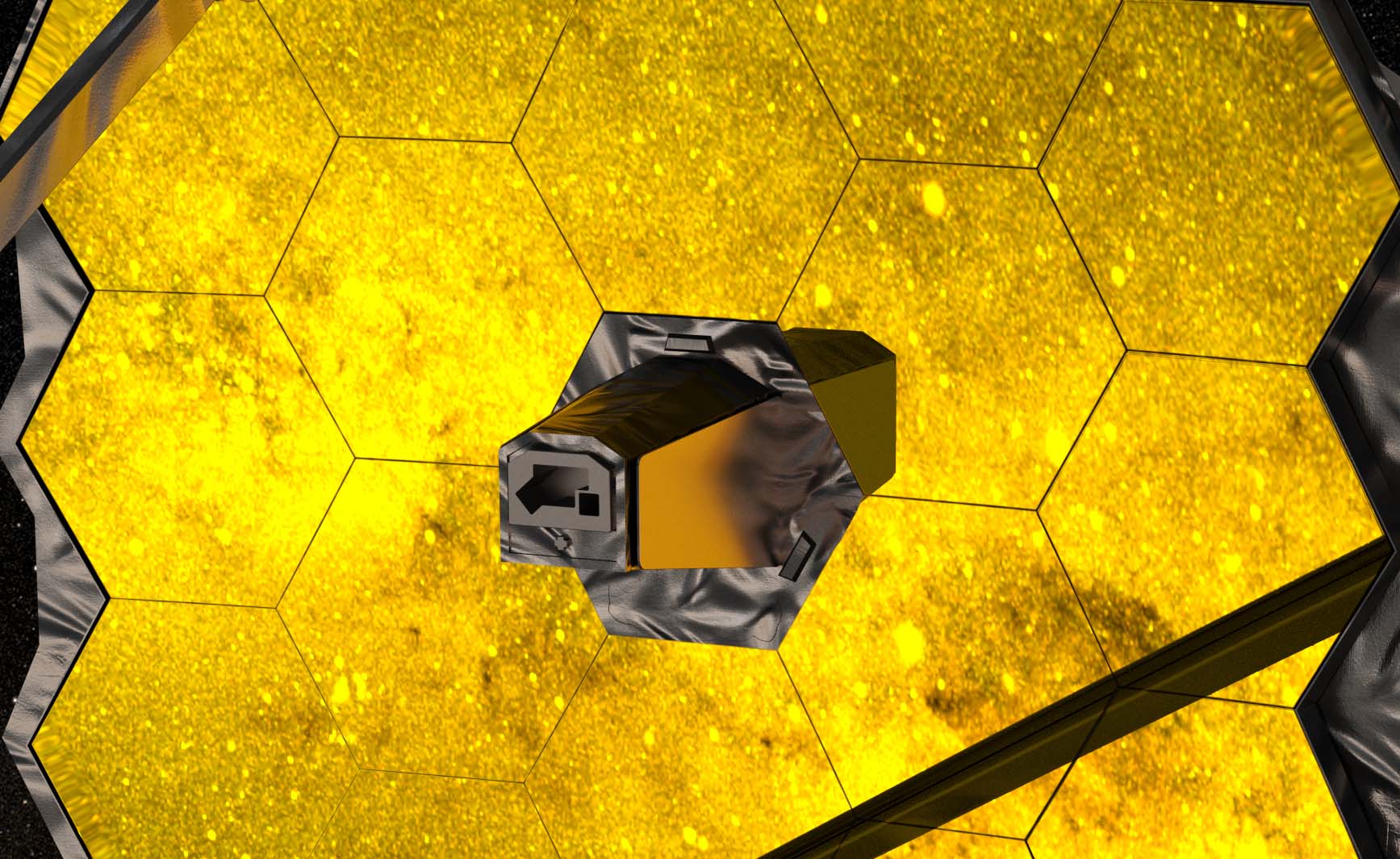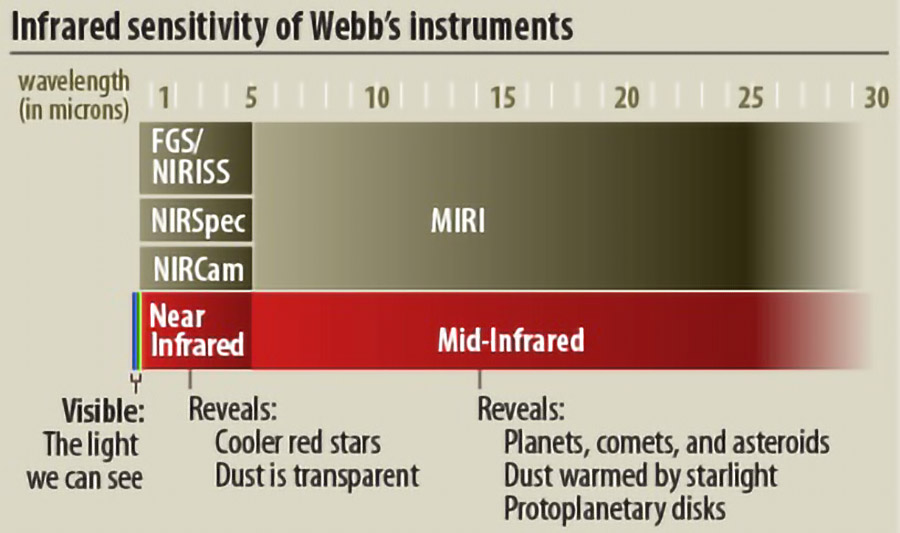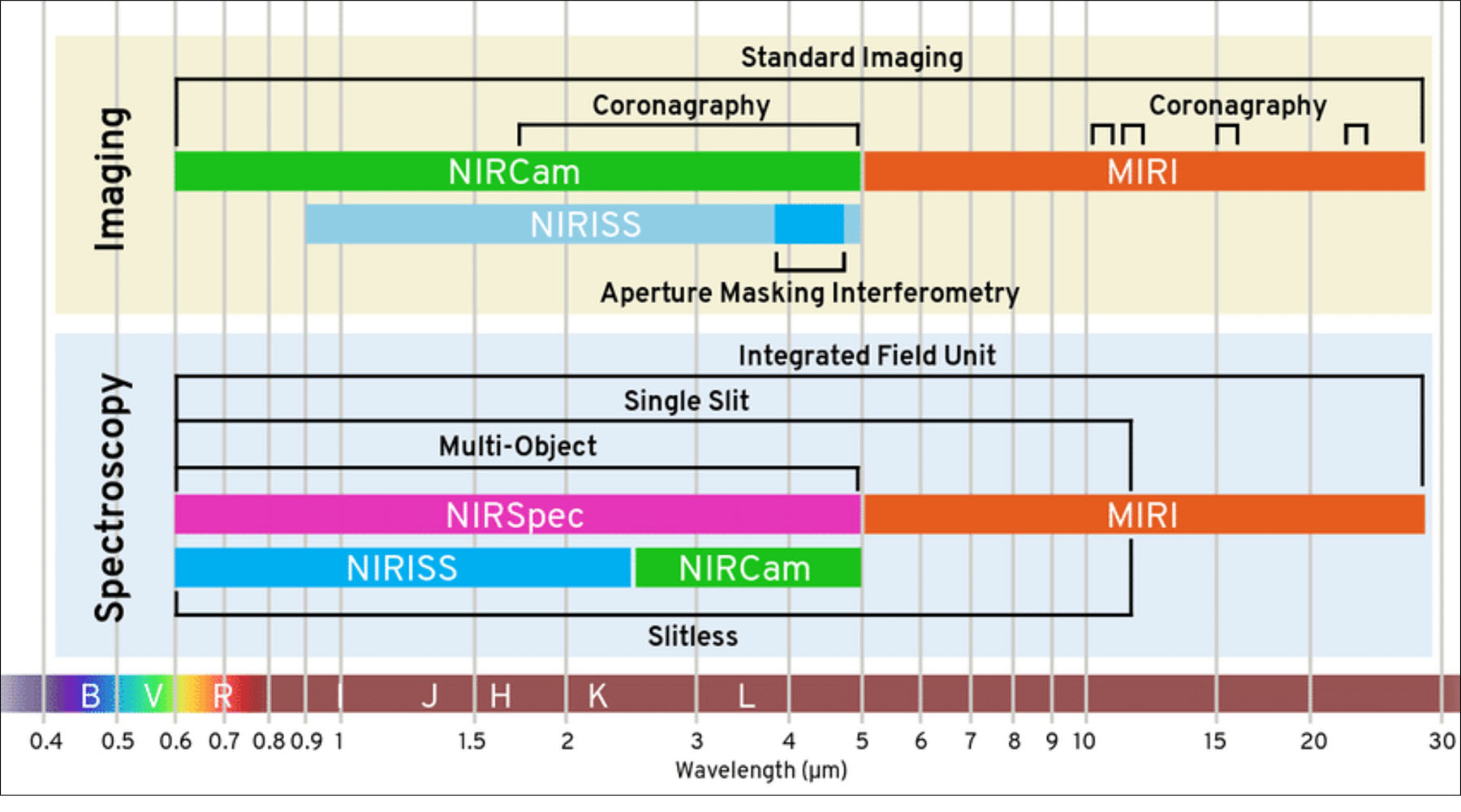Light in the Strangest of Places (if you look at it right)

This week the Webb telescope team kept the excitement going with two main developments.
Light from a star made its way through the entire telescope for the very first time, and engineering images were acquired! These starlight images will be used to focus the telescope’s 18 hexagonal mirrors during the next 3 months. NASA has written a blog describing this process.
The other development this week was turning power on for all of Webb’s instruments. The Mid-Infrared Instrument had been turned on shortly after launch; this week the other three were turned on. In the rest of this blog, we introduce these instruments that Webb uses to analyze light from the cosmos.
About Light
All of Webb’s cameras and spectrographs are optimized to detect infrared light. Light travels in waves on a scale from short to long called the electromagnetic spectrum. The light we can see is only one small part of that spectrum – visible light. Light at wavelengths longer than what we can see is called infrared light, sometimes sorted into near infrared and far infrared. This is the type of light that comes from stars and other objects very far away in the Universe, so it’s the light Webb is designed to analyze.

Meet the Four Webb Instruments
The instrument used for the first engineering images is the Near Infrared Camera (NIRCam). NIRCam is Webb’s main camera. It detects light in the shorter (near) part of the infrared spectrum. Some of NIRCam’s targets will be the earliest stars and galaxies as well as stars in the Milky Way, nearby galaxies and objects at the edge of our solar system.
The Near Infrared Spectrometer (NIRSpec) detects light at the same wavelengths as NIRCam but the real super-power of NIRSpec is its ability to spread the light out into its component colors. Scientists will be able to look at this distinctive spread of colors, called a spectrum, for each object studied with NIRSpec. From such spectra, scientists can compute the object’s temperature, pressure, motions, and chemical makeup, whether the object is a star, a planet, a galaxy, or some other object. In order to study thousands of galaxies, NIRSpec is equipped with an innovative microshutter array that allows it to take the spectrum of 100 objects simultaneously.

Mid-Infrared Instrument (MIRI) contains both a camera for imaging and a spectrograph to study the distinct colors of objects via their spectrum. It detects light from the longer wavelengths of the mid infrared part of the spectrum. Some of MIRI’s key science targets will be the most distant galaxies, newly forming stars, and faint objects at the edge of our Solar System. It will also be able to make incredible images with its wide-field camera.
The fourth instrument is the Fine Guidance Sensor, Near Infrared Imager and Slitless Spectrograph or FGS/NIRISS. The FGS enables precision pointing so Webb can take quality images. NIRISS science objectives include detecting first light and understanding exoplanets.
All of Webb’s instruments are now cooling down to operating temperatures and then will go through commissioning over the next 5 months. They enable Webb’s science, and we can’t wait to see the amazing images they will produce.
